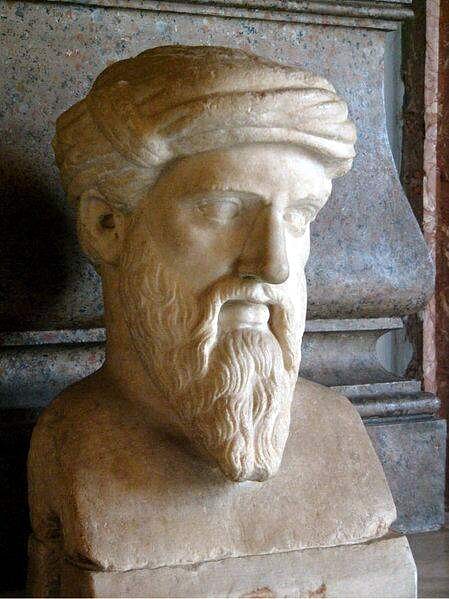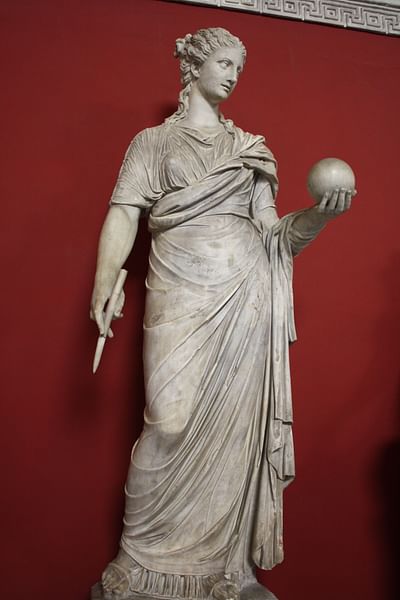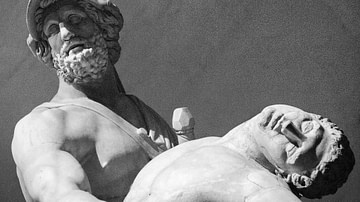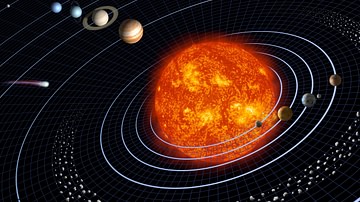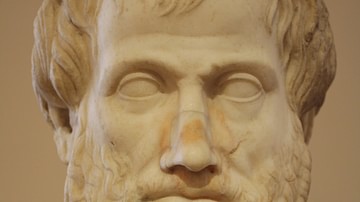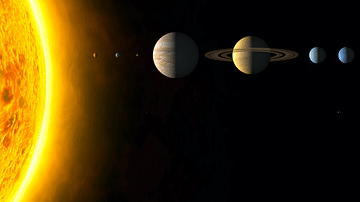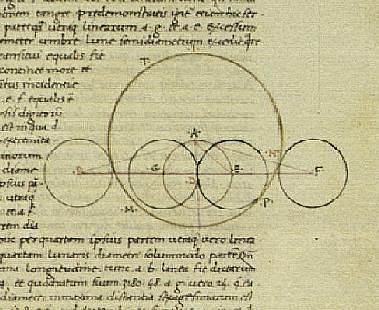
Ancient Greek astronomy was the study of the universe to understand how it functioned and why apart from the established theistic model that claimed all things were ordered and maintained by the gods. Ancient Greek astronomers relied on observation and mathematical calculation to determine the operation of the universe and Earth’s place within it.
There were astronomers at work in ancient India, Mesopotamia, Egypt, China, and elsewhere prior to the development of the discipline in Greece and, actually, the Greeks were latecomers to the field. Drawing on the works of the Babylonians and Egyptians, however, they were able to develop a working model of the universe explained by natural laws rather than supernatural influences. This is not to say that Greek astronomy countered the claims made by astrology that the planets influenced human affairs. Understanding how the planets moved as they did encouraged a “scientific” view of astrology and the belief in celestial influences through the concept of planetary movements that brought celestial bodies closer, then further away, from the earth; exerting a certain power over humans and the natural world as they did so.
By the 8th century BCE, Homer and Hesiod were writing about planetary influences according to the accepted model of a polytheistic universe maintained by the gods. There was no break with this vision, as atheism was considered a capital offense by the Greeks, but beginning with Thales of Miletus (l.c. 585 BCE), various Greek thinkers began offering non-theistic explanations for natural phenomena which, even so, could fit within the theistic paradigm. This line of thought was developed by the Pre-Socratic Philosophers, so-called because they lived before the time of Socrates of Athens (470/469-399 BCE), notably by Pythagoras (l. c. 571 - c.497 BCE), considered by many as the first Greek astronomer (though he was preceded by at least three others) for developing a mathematical system to explain planetary movement.
Pythagoras’ work influenced Plato (l. 428/427-348/347 BCE) who inspired the mathematician Eudoxus of Cnidus (l. c. 410 - c. 347 BCE) whose model of the universe informed the astronomy of Aristotle (l. 384-322 BCE) and the works of Eratosthenes (l. 276-195 BCE), Aristarchus of Samos (l. c. 310 - c. 230 BCE), and the greatest of the Greek astronomers, Hipparchus of Nicea (l.c. 190-c. 120 BCE). Hipparchus’ work directly informed the Almagest of the astronomer Ptolemy (l. 100-170 CE). Ptolemy’s work provided the foundation for the further development of astronomy in Renaissance Europe and, eventually, the establishment of the model of the universe as it is understood today.
Mesopotamia & Egypt
It is generally agreed that the discipline of astronomy began in Mesopotamia, although some scholars argue for Egypt as its origin and others for ancient India. It is thought to have been developed by the Sumerians who invented the sexagesimal system (where 60 is the base number) and then applied it to calculating the hours of night and day, eventually extending their inquiries to the movement of planets and stars. The Sumerians charted the night sky as a circle of 360 degrees and then observed the movement of celestial bodies, applying mathematical principles in predicting when a given planet would appear in a certain part of the sky and first naming the constellations which would be later renamed by the Greeks.
By the 7th century BCE, Sumerian inventions and innovations had been absorbed by others throughout Mesopotamia and Babylon had become famous for its astronomers and astrologers. The Mesopotamians believed they were co-workers with the gods in maintaining order and, to that end, a knowledge of how the universe worked was essential. Even if the gods were understood to have placed the stars in the sky and set the planets in motion, a knowledge of how those stars and planets worked – and what effect they might have on crops, floods, or human affairs – could help one plan accordingly against the forces of chaos and disorder.
This same belief was maintained in Egypt and scholars who claim the Egyptians were the first astronomers point to the stone circle of Nabta Playa, interpreted as a prehistoric astronomical calendar, dating to the 5th millennium BCE, thought to pre-date Sumerian inventions. This claim does hold some weight but, as it is unclear when the Sumerians invented the concept of time or began first charting the skies, the “who was first?” question continues to be debated and this applies equally to the claim for the Indus Valley Civilization as inspiring the first astronomers.
By the First Intermediate Period (2181-2040 BCE), the Egyptians had also charted the night sky as a 360-degree circle which was then divided into decans, groups of 36 stars which appeared regularly and allowed for the development of a star chart. The Egyptians’ knowledge of astronomy was well-known in ancient times and epitomized by the alignment of the pyramids of Giza as well as temples, statuary, obelisks, and the ability to predict the annual flooding of the Nile which fertilized the land.
The Pre-Socratics & Pythagoras
Thales of Miletus is known to have studied in Babylon and, according to scholar George G.M. James, derived his early astronomical and philosophical models from the Babylonians and Egyptians. Whether Thales learned Egyptian astronomy in Babylon or actually visited Egypt is unknown. He is considered the first Greek philosopher and astronomer for accurately predicting the solar eclipse of 28 May 585 BCE. He began his philosophical inquiries by asking what the First Cause of all observable phenomena might be – what was the “basic stuff” that made up the universe? – and this led him from observation of his immediate surroundings to charting the skies.
Thales’ prediction of the eclipse of 585 is well documented by later writers but what else he may have contributed to astronomy is unknown as his works were lost and his beliefs are only preserved in fragments cited by others. Thales was followed by Anaximander (l. c. 610 - c. 546 BCE) and Anaximenes (l. c. 546 BCE) who provided the foundation for Pythagoras through their theories concerning the First Cause as something operating according to natural laws. For Anaximander, this was the apeiron – an eternal creative force – while, for Anaximenes, it was the constant state of flux caused by the rarefication and condensation of air.
Pythagoras believed the First Cause was number and that mathematics was the key to enlightenment. Pythagoras is said to have been the first to ascertain that the earth was spherical – though the Babylonians already knew this centuries before and it was also suggested by Anaximenes and Parmenides (l. c. 485 BCE). Pythagoras’ central interest was the immortality of the soul and his astronomical theories may have developed in response to the question of where souls go after they die and before they are reborn in another body.
As Pythagoras never wrote any of his beliefs down and communicated them orally only to a select few disciples, it is unclear which of his teachings are original to him and which credited to him by later admirers. Even his famous Pythagorean Theorem was not his as the model was known and used in Mesopotamia centuries before he lived. Still, he is credited with a number of accomplishments such as identifying Venus as a single planet whereas, previously, it was considered two different stars, one appearing in the morning and another in the evening. Whether he deserves this credit has been challenged but his insistence on mathematical principles as the key in understanding planetary movement is accepted by scholars as one of his original concepts; even if it is unclear what these principles were.
According to one of his followers (and possibly his successor), Philolaus of Croton (l. c. 470 - c. 385 BCE), Pythagoras theorized that the planets moved in accordance with mathematical harmony. The English word planet comes from the Greek planetes meaning wanderer but, according to Philolaus, Pythagoras maintained the planets did not wander at all but moved in set patterns according to mathematical principles. Philolaus added to the Pythagorean vision by stating that the Earth was not the center of the universe, as was supposed, but that all planets (as well as the Sun and Moon) revolved around a Central Fire which energized them.
Plato Through Aristotle
Plato was significantly influenced by Pythagorean thought, especially concerning the concept of the Transmigration of Souls (reincarnation) but rejected Pythagoras’ theory of mathematical harmony in favor of celestial “tracks” each planet moved on. The apparent “wandering” of the planets was caused by these tracks that encircled the earth upon which each planet was fixed and, at times, appeared to move forward or backward. In his dialogue of the Timaeus, Plato depicts the Earth as spherical, sitting at the center of a larger sphere containing the Sun, Moon, planets, and stars, which revolve around it.
Eudoxus of Cnidus (a student of the astronomer and statesman Archytas of Tarentum, who had studied under Philolaus) developed Plato’s vision and expanded on it, arguing for planetary rotation on an axis in a sphere apart from those of the Sun and Moon and with each planet operating within its own sphere. To Eudoxus, the seemingly random motion of the planets was not random at all but only appeared so because of their revolutions within their own sphere of influence and around the earth. His claim was later challenged as it could not account for the way planets appeared to people on earth. As with Plato’s model, if a planet consistently rotated in the same way in its own “sphere”, then why did planets sometimes appear closer to Earth, and brighter, than at others?
Aristotle tried to solve this problem by claiming that the heavenly bodies were perfect and moved at a constant speed in a circular motion around the Earth, which was stationary. Each planet moved in its own sphere (as in Plato’s thought) in an elliptical pattern around the Earth and seemed brighter sometimes because it drew closer before moving away again. Aristotle insisted on the planets as perfect, indestructible, spheres whose course was unchanging since, once set in motion by the agency of the Prime Mover (that which began all motion but remains unmoving itself), they would remain in motion. The Earth, Aristotle said, was smaller than the other planets based on his observations of the night sky as seen from different vantage points: if the Earth were a large planet, different constellations could not be seen at the times they were by those in different places.
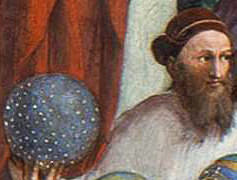
Eratosthenes through Hipparchus
Eratosthenes challenged Aristotle’s claims of the Earth’s size by comparing shadows of sundials at Alexandria and Syene (modern-day Aswan), Egypt, which lay at different latitudes, at the same time. He calculated the Earth’s circumference at 250,000 stades (approximately 24,854 miles or 40,000 kilometers). This was smaller than Aristotle’s conclusion of 400,000 stades and seems to have encouraged the belief in the geocentric model of the universe as Earth was seen as this small, immobile object circled by larger heavenly bodies which, following Aristotle’s thought, were comprised of ether. These other, larger, bodies were lighter owing to their composition and so rolled easily on their tracks while solid Earth remained still. If the Earth moved, the reasoning went, one would feel the motion and so it had to be stationary.
Understanding the Earth as the center of the universe, the astronomer Apollonius of Perga (l. c. 262 - c. 190 BCE) suggested the concept of the eccentric deferent – an off-center circular track on which a planet moves within a construct known as the deferent-epicycle model – in which the epicycle moves the planet in concert with the off-center deferent. This model was challenged by Aristarchus of Samos who proposed a heliocentric understanding of the universe in an attempt at resolving the old issue of why planets look brighter at some times than at others. Aristarchus also believed it only made sense that smaller bodies should revolve around larger ones and since the Sun was clearly larger than the Earth, it was most likely the center of the solar system around which all other planets gravitated.
Aristarchus’ claims were noted by the greatest of the ancient Greek astronomers, Hipparchus of Nicea who, nevertheless, rejected the heliocentric model as inadequate. Aristotle’s view of the planets moving in perfect circles fit with the established paradigm of Earth as the center of the solar system and this was supported by Apollonius of Perga’s deferent-epicycle model. Drawing on these, Hipparchus claimed Aristarchus was wrong.
Hipparchus is still recognized as the greatest of the Greek astronomers, however, for his use of Babylonian astronomy, invention of trigonometry, the ability to predict solar eclipses precisely, and the creation of the first comprehensive star chart. He also charted the movement of the Sun and Moon, their sizes, distance from Earth and, using a device he invented (the celestial globe), corrected Eratosthenes’ conclusions regarding the size of the Earth.
He is also one of the leading candidates as the inventor of the Antikythera Device (also known as the Antikythera Mechanism), believed to be the world’s first analogue computer and dated to the late second century/early first century BCE, and so corresponding to Hipparchus’ time. The device, discovered in 1901, is modeled on Babylonian astronomical principles correlated with Egyptian astronomy, but manufactured in Greece and featuring letters of the Greek alphabet.
By turning a crank on the device, one could calculate the position of planets, the Sun, Moon, and when an eclipse was most likely to occur. Hipparchus is only one of a number of ancient inventors credited with the Antikythera Mechanism, however, as Archimedes of Syracuse (l. c. 287-c.212 BCE), another astronomer, famous inventor, and friend of Eratosthenes, has also been cited as the designer.
Ptolemy & the Almagest
Hipparchus’ work informed that of Claudius Ptolemy, an astrologer who was drawn to astronomy as a means to the end of more precise predictions. Hipparchus, through his innovation of trigonometry, was able to make accurate predictions concerning the movements of celestial bodies and this skill, Ptolemy seems to have felt, would assist him in providing better divinations.
Like Hipparchus, Ptolemy believed in the Aristotelian model of the universe in which heavenly bodies were perfect and incorruptible while the Earth was subject to change. In his most famous and influential work, the Almagest (“The Greatest” usually given as The Great Treatise), he claimed the Earth was the center of the universe while the Sun, Moon, certain stars, and five planets – Mercury, Venus, Mars, Jupiter, and Saturn – revolved around it.
The sphere of the Moon – considered closest to the Earth – served as a kind of border between the constant change of the Earth’s sphere and the incorruptible nature of the Sun, stars, and other planets. The Moon could be observed as changeable – similar to the changes one observed on Earth – while the other planets seemed changeless and eternal. Ptolemy’s concepts were accepted as aligning with the Aristotelian model and so were accepted. His works not only survived but were still influential when they were read, and corrected, by Nicolaus Copernicus (l. 1473-1543) whose On the Revolution of the Celestial Spheres inspired the Scientific Revolution and eventually established the heliocentric model of the universe as it is understood today.
Conclusion
The principles of Greek astronomy, up through Aristotle at least, were spread across the Near East to India by Alexander the Great (l. 356-323 BCE) on his conquests and were developed further by astronomers of other nationalities. The Indian astronomer Aryabhata (l. 476-550 CE), to name only one example, developed trigonometry further, calculated lunar and solar eclipses accurately and also recognized that the Earth moved – not the sky around it – as had previously been believed. Indian astronomy was already well-established by the time of Alexander, dated to the time of the Indus Valley Civilization (c. 7000-c. 600 BCE) and developed during the Vedic Period (c. 1500-c.500 BCE) but Greek astronomy provided Indian thinkers such as Aryabhata with different insights and models to work from.
Many of the theories of the Greek astronomers turned out to be wrong, and many others are now recognized as having first been developed by the Mesopotamians, Indians, and Egyptians, but this does not diminish their efforts or achievements. In their time, the Greek astronomers were grappling with new territory at a time when religious authorities were encouraging a theistic interpretation of the universe which made their efforts seem, at best, a silly waste of time and, at worst, an atheistic challenge to Divine Sovereignty. Interestingly, this would be the same dynamic at work centuries later and the same challenge faced by astronomers such as Galileo when they pursued their own investigations of the universe despite opposition from the Church.
